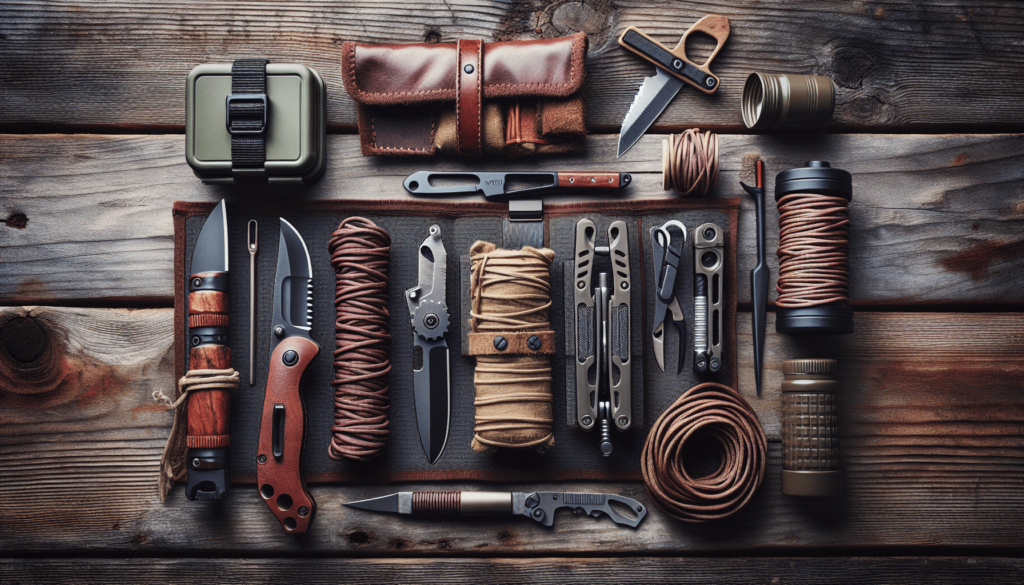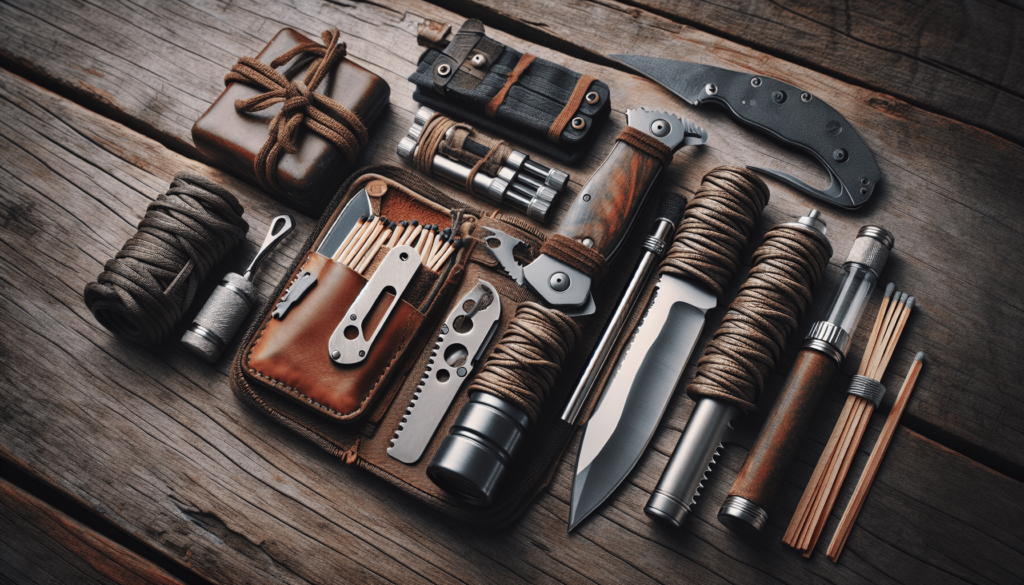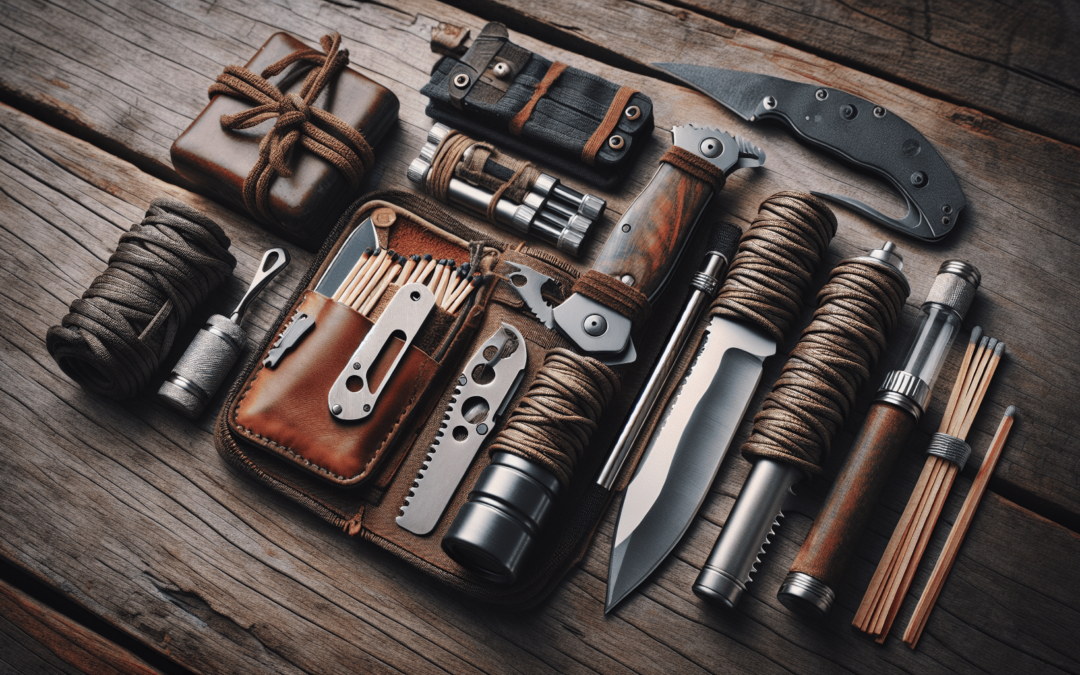Creating your own bushcraft survival kit can be an exciting and rewarding endeavor, arming you with the necessary tools and knowledge to handle various outdoor challenges. In “Creating A Bushcraft Survival Kit,” you’ll discover essential gear, valuable techniques, and expert tips to ensure you’re well-prepared for any wilderness adventure. From selecting the right knife to mastering fire-starting methods, this guide offers a comprehensive approach to building a kit that will boost your confidence and enhance your bushcraft skills. Dive in and start crafting your ideal survival toolkit today! Have you ever wondered how you would survive if you found yourself in the wilderness with just a few essential items? Creating a bushcraft survival kit isn’t just about preparing for the worst; it’s about empowering yourself with the tools and knowledge to thrive in the great outdoors. In this article, we’ll walk you through everything you need to build a comprehensive bushcraft survival kit that will prepare you for any situation Mother Nature throws your way.
Understanding Bushcraft Survival
Bushcraft isn’t just another term for camping or hiking; it’s a way of life that emphasizes skills and knowledge about surviving and thriving in the wilderness. By building a bushcraft survival kit, you ensure that you have the right tools and resources to tackle any environment confidently.
What is Bushcraft?
Bushcraft often includes skills such as fire-making, shelter building, tracking, hunting, and water purification. These skills enable you to use natural resources efficiently and minimize the impact on the environment.
Why Build a Bushcraft Survival Kit?
A bushcraft survival kit equips you with essential tools that will help you navigate and endure outdoor challenges. Whether you’re hiking, camping, or simply exploring the great outdoors, a well-prepared kit can be the difference between a challenging experience and a life-threatening one.
Essential Components of a Bushcraft Survival Kit
Your bushcraft kit should strike a balance between practicality and necessity. Remember, the aim is not just to survive but to thrive in the wilderness. Below are the indispensable elements to include:
Cutting Tools
A good cutting tool is perhaps the most important item in your kit. From building shelters to preparing food, a reliable knife can serve multiple functions.
- Fixed Blade Knife: A robust, full-tang knife is indispensable.
- Folding Knife: Compact and convenient for more delicate tasks.
- Multi-tool: Versatile and useful for various minor tasks.
| Tool | Recommended Brands | Estimated Cost |
|---|---|---|
| Fixed Blade Knife | Morakniv, ESEE, Gerber | $30 – $100 |
| Folding Knife | Benchmade, Spyderco | $40 – $150 |
| Multi-tool | Leatherman, Victorinox | $50 – $200 |
Fire-making Solutions
Starting a fire is not only crucial for warmth but also for cooking and signaling for help.
- Ferrocerium Rod: Reliable fire starter that works in all weather conditions.
- Lighters: Always handy even if just as a backup.
- Matches: Waterproof matches can be highly effective.
| Tool | Recommended Brands | Estimated Cost |
|---|---|---|
| Ferrocerium Rod | Light My Fire, Exotac | $10 – $40 |
| Lighters | Bic, Zippo | $2 – $20 |
| Waterproof Matches | UCO, Coghlan’s | $5 – $15 |
Shelter
A proper shelter can keep you safe from the elements and potential wildlife.
- Tarp: Lightweight and versatile, can be used to create a variety of shelters.
- Emergency Blanket: Compact and offers excellent insulation.
- Rope/Paracord: Essential for setting up tarps, building shelters, and other uses.
| Item | Recommended Brands | Estimated Cost |
|---|---|---|
| Tarp | Bushcraft Outfitters, Aqua Quest | $20 – $70 |
| Emergency Blanket | Mylar, SOL | $5 – $20 |
| Paracord | 5col, Titan | $10 – $30 |
Water and Food
Access to clean drinking water and nutritious food is crucial for survival.
- Water Filter/Purification Tablets: These help ensure that you can drink water from natural sources without getting sick.
- Metal Container: Useful for boiling water and cooking food.
- Non-perishable Food: High-calorie options such as energy bars or dehydrated meals.
| Item | Recommended Brands | Estimated Cost |
|---|---|---|
| Water Filter | Sawyer, Katadyn | $25 – $100 |
| Purification Tablets | Aquamira, Potable Aqua | $10 – $20 |
| Metal Container | Stanley, GSI | $20 – $50 |
| Non-perishable Food | Clif Bar, Mountain House | $5 – $15 each |
Navigation and Signaling
Knowing where you are and how to get to safety can dramatically improve your chances of survival.
- Compass: Essential for navigation, particularly in dense forests.
- Maps: Always carry relevant topographical maps.
- Signaling Device: A whistle can signal for help over long distances.
| Item | Recommended Brands | Estimated Cost |
|---|---|---|
| Compass | Suunto, Silva | $15 – $60 |
| Topographical Maps | USGS | Varies |
| Signaling Whistle | Fox 40, Acme | $5 – $15 |
Clothing
Your clothing should be appropriate for the environment and weather conditions.
- Base Layers: Moisture-wicking materials like merino wool or synthetic fibers.
- Outer Layers: Waterproof and windproof jackets and pants.
- Gloves and Hats: Essential for colder conditions.
| Item | Recommended Fabrics | Estimated Cost |
|---|---|---|
| Base Layers | Merino Wool, Polyester | $20 – $100 |
| Outer Layers | Gore-Tex, eVent | $50 – $300 |
| Gloves and Hats | Fleece, Wool | $10 – $50 |
First Aid
A well-stocked first aid kit can treat common injuries and prevent minor issues from becoming severe.
- Basic Supplies: Bandages, antiseptic wipes, adhesive tape, and gauze pads.
- Medications: Pain relievers, antihistamines, and any personal prescription medications.
- Specialized Tools: Tweezers, scissors, and safety pins.
| Item | Recommended Brands | Estimated Cost |
|---|---|---|
| Basic Supplies | Adventure Medical Kits | $20 – $70 |
| Medications | Various | Varies |
| Specialized Tools | Various | $10 – $30 |
Additional Tools and Gear
Sometimes, having a few extra tools in your kit can make all the difference.
- Flashlight or Headlamp: Navigating the wilderness at night requires reliable lighting.
- Duct Tape: Versatile and useful for repairs.
- Fishing Gear: Lightweight fishing line and hooks can help you catch your next meal.
| Item | Recommended Brands | Estimated Cost |
|---|---|---|
| Flashlight/Headlamp | Petzl, Black Diamond | $20 – $100 |
| Duct Tape | Gorilla, 3M | $5 – $10 |
| Fishing Gear | Berkley, Eagle Claw | $10 – $30 |

Putting It All Together
Now that you know what essentials to include, the next step is assembling your bushcraft survival kit. Make sure to choose a durable and spacious backpack that can comfortably carry all your gear.
Organizing Your Kit
Organize your items so that they are easily accessible. Keep the heaviest items close to your back for better balance and distribute the weight evenly.
Regular Maintenance
Regularly check your gear to ensure everything is in working order. Replace any expired items and sharpen your knives as needed.
Practice Makes Perfect
Familiarizing yourself with your kit and practicing your bushcraft skills is crucial. The more comfortable you are with using your tools and resources, the better prepared you’ll be in a real survival situation.
Frequently Asked Questions
How heavy should my bushcraft survival kit be?
Your kit should be light enough to carry comfortably over long distances. Aim for a total weight of around 20-30 pounds, depending on your physical condition and the duration of your trip.
Can I build a bushcraft kit on a budget?
Absolutely! While some high-end gear is expensive, you can find budget-friendly alternatives that perform well. Prioritize essential items and upgrade as needed over time.
Do I really need all these items in my kit?
While having all these items can increase your chances of thriving, the specifics might vary based on the environment and the length of your adventure. Assess the conditions and customize your kit accordingly.

Final Thoughts
Creating a bushcraft survival kit is more than just a preparatory exercise; it’s a step toward becoming self-reliant and embracing the wild. Equipped with the right tools and knowledge, you’ll not only survive but also enjoy the beauty and challenges of nature. Remember, your best asset in the wilderness is a well-prepared mind, supported by a well-prepared kit.
Take time to practice using each component and continuously refine your skills. The wilderness can be unpredictable, but with your trusty bushcraft survival kit by your side, you’ll be ready for whatever comes your way. Happy adventuring!

